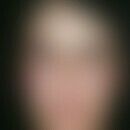DefinitionThis section has been translated automatically.
Opacifiers, also known as pearlescent agents, are agents which are added to cosmetic products to enhance their visual appearance. They are used to cloud transparent or translucent formulations. Opacifiers can be added to formulations up to about 10 %.
They give the formulations a pleasant, slightly pearlescent, homogeneous and creamy appearance. Many opacifiers are fatty acid esters or fatty alcohols and often have a certain refatting effect.
The optical requirements for an opacifier vary. Often products are manufactured which cause a mica effect (so-called "pearl luster"). Other products impart a non-gloss "creamy" white haze. Opacifiers are often fine-particle polymer or solid dispersions which, in addition to water and/or a polyol - e.g. glycerol - essentially contain only a wax body and a suitable emulsifier.
Many opacifiers are based on copolymers of acrylic or methacrylic acid and styrene and are not biodegradable.
Other opacifiers are low-viscosity concentrates based on waxes, sugar surfactants and glycerides.
Ingredient(s)This section has been translated automatically.
Examples of opacifiers:
- Calcium sulphate
- Cellulose
- Glycol palmitates
- Palmitic acid glycol ester
- MICA (mica, mixture of minerals)
- Mica (silicate mineral)
- PEG-2 stearates (esters of stearic acid and diethylene glycol)
- Propylene glycol distearate (esters of stearic acid and propylene glycol)
- Propylene glycol stearate (esters of stearic acid and propylene glycol)
- Glycol stearate
- Glycol distearate
- cetyl alcohol
- Ceto stearyl alcohol
- Ceto Stearyl Alcohol
- Ceto stearyl alcohol
- Stearyl alcohol



